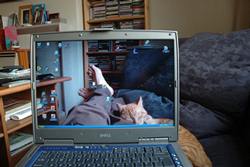Now that you have successfully chunked the article from the last section and recorded the main ideas, you are ready to begin summarizing the text. A good summary has four defining features:
- It is short in length.
- It tells us what was most important to the person who wrote it.
- It is written in your own words or paraphrases the original text.
- It states information that someone unfamiliar with the topic would need in order to understand the main ideas, the connections between them, and the original author’s purpose for writing.
These guidelines are helpful for writing summaries:
| Include These in a Summary |
Do Not Include These in a Summary
|
|---|---|
| Author of the text | Details about the main ideas |
| Title of the text | Examples, illustrations, or anecdotes |
| Main ideas of the text (a.k.a., the main ideas of each chunk) | Extended quotations |
| A clear thesis statement that expresses the main idea or intention of the author’s work | Phrases such as “The way the author does this is by . . .” or “How this happens is . . .” or “This article is about . . .” |
| Definitions of the original author’s key terms | Any opinions or judgments about what you read |
| An active voice: “The author states that . . .” |

Source: “Transparent cat,” raindog, Flickr
Now read a summary of the article “Teens Tune out TV, Log on Instead: Young People Spend an Average of 16.7 Hours Online a Week.” As you read, think about whether the writer has written a good summary that includes the four defining features.
The article “Teens Tune out TV, Log on Instead: Young People Spend an Average of 16.7 Hours Online a Week” by Jane Weaver appeared in the July 24, 2011, “Tech and Gadgets” section on MSNBC.com. The author states that a new study has found that teens and young adults spend more time online than watching television. Other findings indicate that young people ages 13–24 spend a significantly higher portion of their time online than they do watching television, listening to the radio, talking on the phone, or reading books and magazines. The research, which focused on 2,500 teens, indicates that young people prefer the Internet because it allows them to “control” what they view or hear, and this is appealing to them. Even though there are an overwhelming number of ways that young people can consume content, they do not feel overwhelmed by the abundance of choices available to them.
According to Yahoo!, media preferences of the “wired” generation show marketing firms the value of the Internet in reaching young consumers. Their study also found flaws in research done by Nielsen Media, the television ratings agency, that indicated that young people watch more television than they actually do. To underscore this, several other studies confirm Yahoo!’s findings. Groups such as AOL, Pew Internet, and American Life Research conducted similar studies on teen Internet usage with similar results. The Pew study also found that multitasking is a common activity in one third of young people. In short, teen lives are structured around media of all types. Multimedia permeates all that they do in their waking hours.
If you thought this was a good summary, click the thumbs-up button. If not, click the thumbs-down button. Read the feedback that appears after you click.

Source: Circle-Thumb, Wikimedia

Source: Circle-Thumb, Wikimedia

Source: Circle-Thumb-Down, Wikimedia

Source: Circle-Thumb-Down, Wikimedia
As you begin to shorten this summary, you need to think about essential information and nonessential information. A summary must include essential information like the author’s name, the title of the text, the main argument, and the main ideas that support it. Nonessential information includes details, examples, illustrations, and anecdotes that are not necessary for presenting the main argument and main points.
Reread the summary above. When you are ready, begin the next activity. Use the pull-down menu to choose whether each sentence that appears is “Essential” information or “Nonessential” information.
OK, let’s pretend you have rewritten the summary to include only the essential information.
The article “Teens Tune out TV, Log on Instead: Young People Spend an Average of 16.7 Hours Online a Week” by Jane Weaver appeared in the July 24, 2011, “Tech and Gadgets” section on MSNBC.com. The author focuses on a new study that has found that teens and young adults spend more time online than watching television. The research, which included 2,500 teens, indicates that young people prefer the Internet because it allows them to “control” what they view or hear and this is appealing to them.
According to Yahoo!, media preferences of the “wired” generation are important to marketing firms who see the value of the Internet in reaching young consumers. In addition to this, a study by Pew found that multitasking is a common activity in one third of young people. Weaver concludes the article by noting that teen lives are structured around media of all types. Multimedia permeates all that they do in waking hours.

Source: “Focus,” Michael Dales, Flickr
Now 159 words in length, this is a better summary even though it has fewer words. It’s important to remember that when you write a summary, your final product will not always be exactly like those of other students in your class or even what your teacher has written. As long as your summary contains essential information, your writing will be right on track.